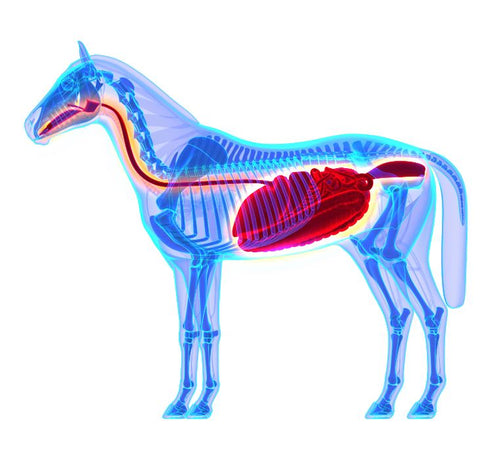A horse only produces saliva when it is actually chewing. It is the physical presence of the food in the mouth that causes secretion of saliva. Between 10-12 litres are secreted daily in a horse fed a largely fibre diet.
Saliva acts as a lubricant to prevent ‘choke’, and contains bicarbonate which acts as an essential buffer to the acids produced in the stomach. The more time the horse spends chewing the more saliva is produced and the more efficiently the stomach acid is neutralised.
Concentrates require less chewing 800 to 1200 chews per kg compared with the 3000 to 3500 chews per kg for forage. Less chewing equals less saliva and less saliva can predispose a horse to gastric ulcers.
In contrast to other mono gastric digestive systems the horse’s stomach plays a limited role in digestion. Some initial breakdown of proteins to polypeptide chains and initial breaking of soluble carbohydrate bonds occurs. However, the main role is to prepare feed for more extensive digestion in the small intestine and microbial fermentation in the hind gut. To enhance stomach activity it is best to trickle feed your horse and allow the stomach to remain 2/3rds full so that feed preparation and buffering can occur and optimise preparation for passage to the small intestine.
The adult horse also has a relatively short small intestine 21-25 m in length. Transit of the digesta through the small intestine is quite rapid yet a surprising amount of digestion and absorption take place. The material leaving the small intestine consists of fibrous feed residues, undigested feed starch and protein, microorganisms intestinal secretions and cell debris.
Read our full advice paper on 'Forages and feeding your horse' (all references listed in this document).
Written by Becky James BSc MSc – Director, Technical Sales, Haygain

















